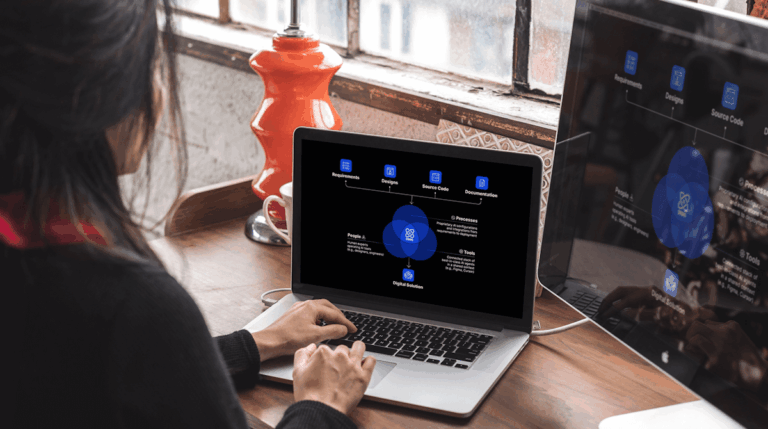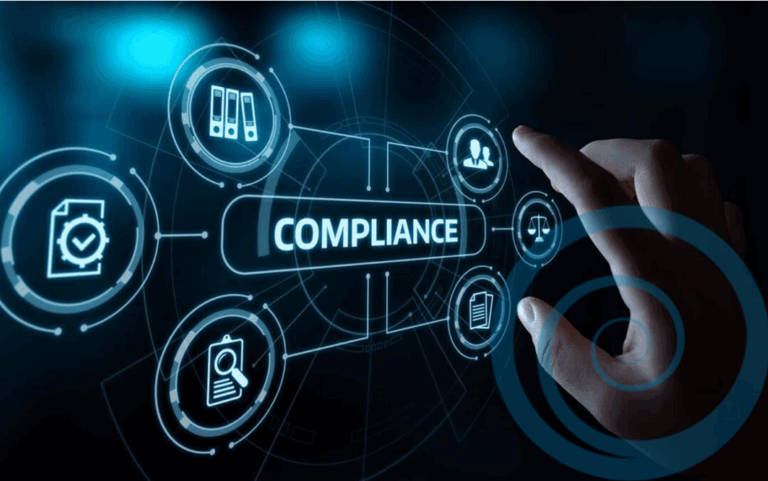Are You Ready for Always-On Security?
Modern cyber security monitoring goes far beyond antivirus and firewalls. If your infrastructure isn’t built for visibility, automation, and rapid response, you may be leaving critical vulnerabilities unaddressed.
To successfully implement these advanced security measures, businesses must first assess their existing cybersecurity strategy and infrastructure. This involves identifying the types of cyber threats that could potentially target their systems and ensuring that all endpoint devices are properly secured. Additionally, establishing a separate user account for administrative tasks is crucial to minimize the risk of unauthorized access.
Businesses should also evaluate the financial implications of implementing comprehensive security monitoring. Although some may perceive it as a costly option, the long-term advantages of preventing data breaches and safeguarding sensitive information far outweigh the initial investment.
Another vital aspect is the necessity for regular training and awareness programs for employees. This helps cultivate a culture of security within the organization, making it more challenging for cybercriminals to trick users into compromising the system. By fostering an environment where security is a collective responsibility, businesses can better protect themselves from potential cyber threats.
Finally, ongoing support and maintenance of security systems are imperative. This includes regularly updating software, conducting security audits, and ensuring that all systems are functioning at their best. By doing so, businesses can continue to progress towards their security objectives, ensuring that they are well-prepared to respond to any threats that may arise.
This 10-point checklist is designed to help you assess whether your business is prepared to adopt or enhance continuous security monitoring—such as MDR (Managed Detection & Response), SIEM platforms, or automated security tools like 3PO Secure.
Each checklist point includes:
- A question to self-assess
- A brief explanation
- A “Red flag” indicator for teams falling short
1. Infrastructure Configuration Consistency
✅ Have you documented and standardized how environments are built across development, testing, and production?
→ Inconsistent environments make monitoring unreliable and increase the chances of missed threats.
Red Flag: Ad hoc infrastructure that varies by environment or is undocumented.
To achieve infrastructure configuration consistency, businesses must ensure that their systems are uniformly set up across all environments. This involves creating detailed documentation and standard operating procedures for building and maintaining these environments. By doing so, companies can reduce the risk of configuration drift, which can lead to vulnerabilities and security gaps.
2. Centralized Access Control
✅ Do you use centralized identity and access management (IAM) for user roles and permissions?
→ Monitoring tools rely on consistent access policies to spot privilege misuse.
Red Flag: No role-based access control (RBAC) or excessive permissions granted by default.
Centralized access control is a cornerstone of effective cybersecurity strategy, ensuring that only authorized personnel can access sensitive data and systems. By implementing IAM solutions, businesses can streamline the management of user identities, roles, and permissions across various platforms and applications. This not only enhances security but also simplifies compliance with regulatory requirements by providing a clear audit trail of who accessed what and when.
3. Comprehensive Logging Enabled
✅ Are logs captured across endpoints, servers, cloud services, and applications?
→ No visibility = no protection. Logging is foundational for any SIEM or MDR setup.
Red Flag: Critical logs aren’t stored, parsed, or retained consistently.
By capturing logs across various systems and platforms, businesses gain valuable insights into their operations and can quickly identify potential threats or anomalies. This practice not only aids in detecting and responding to cyber threats but also supports compliance with regulatory standards by providing a detailed record of activities.
4. Real-Time Alerting in Place
✅ Do you have real-time alerting systems integrated with your logs and infrastructure?
→ Alerts are only useful if they’re fast, relevant, and actionable.
Red Flag: Teams rely on manual log reviews or slow, noisy alerts.
Real-time alerting is an essential component of an effective cybersecurity strategy, allowing businesses to respond promptly to potential threats. By integrating real-time alerting systems with logs and infrastructure, companies can ensure that they are immediately notified of any suspicious activities or anomalies. This proactive approach enables security teams to take swift action, minimizing the impact of cyber threats and preventing potential data loss or breaches.
5. Incident Response Playbook
✅ Have you defined clear response workflows and escalation paths for security events?
→ A good playbook reduces response time and panic when threats emerge.
Red Flag: No formalized IR plan or it’s outdated/unshared.
An Incident Response Playbook is an essential tool in the arsenal of any business aiming to maintain robust cybersecurity defenses. This playbook serves as a detailed guide that outlines the steps to be taken when a security incident occurs, ensuring that the response is swift, organized, and effective. It typically includes predefined roles and responsibilities for team members, communication protocols, and specific actions to address various types of cyber threats, such as data breaches or ransomware attacks.
6. Vulnerability Management Process
✅ Do you routinely scan for vulnerabilities and track their resolution?
→ Continuous monitoring must be paired with continuous hardening.
Red Flag: Patch cycles are manual, irregular, or undocumented.
A comprehensive vulnerability management process is crucial for maintaining the security and integrity of a business’s IT infrastructure. This process involves regular scanning of systems, applications, and networks to identify potential vulnerabilities that could be exploited by cybercriminals. Once vulnerabilities are discovered, they need to be categorized based on their severity and potential impact on the organization.
7. DevOps Integration
✅ Are security tools integrated into your CI/CD pipelines?
→ Security shouldn’t start after deployment—embed it into development.
Red Flag: Security checks occur only after launch or are handled by a separate team.
In today’s fast-paced digital landscape, integrating security tools into your DevOps processes is not just a best practice; it’s a necessity. By embedding security into the Continuous Integration/Continuous Deployment (CI/CD) pipelines, businesses can proactively identify and address vulnerabilities during the development phase, rather than reacting to them post-deployment. This approach, commonly referred to as DevSecOps, ensures that security is a continuous and integral part of the software development lifecycle.
8. Cloud vs. On-Prem Awareness
✅ Do you know where your most sensitive assets live—and how they’re monitored?
→ Hybrid environments require tailored approaches for visibility and control.
Red Flag: Uncertainty about coverage across cloud vs. local systems.
Understanding the distinction between cloud and on-premises environments is crucial for any business aiming to maintain robust cybersecurity. With the increasing adoption of cloud computing, many organizations operate in hybrid environments, where some assets are stored on local servers while others reside in the cloud. This complexity requires a comprehensive approach to ensure that all assets, regardless of their location, are adequately monitored and protected.
9. Security Tool Coverage Map
✅ Can you clearly identify what each tool in your stack does and what gaps remain?
→ Tool sprawl and blind spots lead to false confidence.
Red Flag: Overlapping tools with unclear roles—or key areas unprotected.
In the realm of cybersecurity, having a well-defined security tool coverage map is essential for businesses to effectively protect their digital assets. This involves creating a comprehensive overview of all the security tools deployed within the organization, detailing their specific functions, and identifying any potential overlaps or gaps in coverage. By doing so, businesses can ensure that their security infrastructure is not only efficient but also cost-effective, avoiding the pitfalls of redundant tools that do not add value.
10. Team Capacity & Ownership
✅ Do you have people (internal or external) actively managing your security monitoring?
→ Tools are only as effective as the people who use them.
Red Flag: Security is “everyone’s job,” but no one is clearly responsible.
Having a dedicated team or individual responsible for managing security monitoring is crucial for maintaining a robust cybersecurity posture. This team should consist of skilled professionals who are well-versed in the latest security trends, tools, and threats. They should be capable of interpreting security alerts, responding to incidents, and continuously improving the security measures in place. Whether it’s an in-house team or an external service provider, having clear ownership ensures accountability and a systematic approach to addressing security challenges.
You’ve Completed the Checklist—Now What?
If you spotted a few red flags, you’re not alone. Many mid-sized businesses know they need better visibility, automation, and response—but aren’t sure where to start.
In today’s rapidly evolving digital landscape, the importance of robust cybersecurity measures cannot be overstated. With the increasing frequency and sophistication of cyber threats, businesses must be proactive in safeguarding their critical data and infrastructure. This means not only addressing the immediate red flags identified in the checklist but also adopting a comprehensive cybersecurity strategy that evolves with emerging threats.
That’s where Dualboot steps in. We integrate secure DevOps practices, automation, and expert knowledge to bridge your security gaps before they escalate into risks.
Dualboot’s strategy is comprehensive, emphasizing the integration of state-of-the-art technology with expert insights to establish a robust security framework. By utilizing advanced tools and methodologies, such as machine learning and artificial intelligence, we strengthen threat detection and response capabilities, ensuring businesses are prepared to tackle any potential breaches.
Get Your Free Security Audit
Discover where your systems stand—and what it’ll take to scale with confidence.






